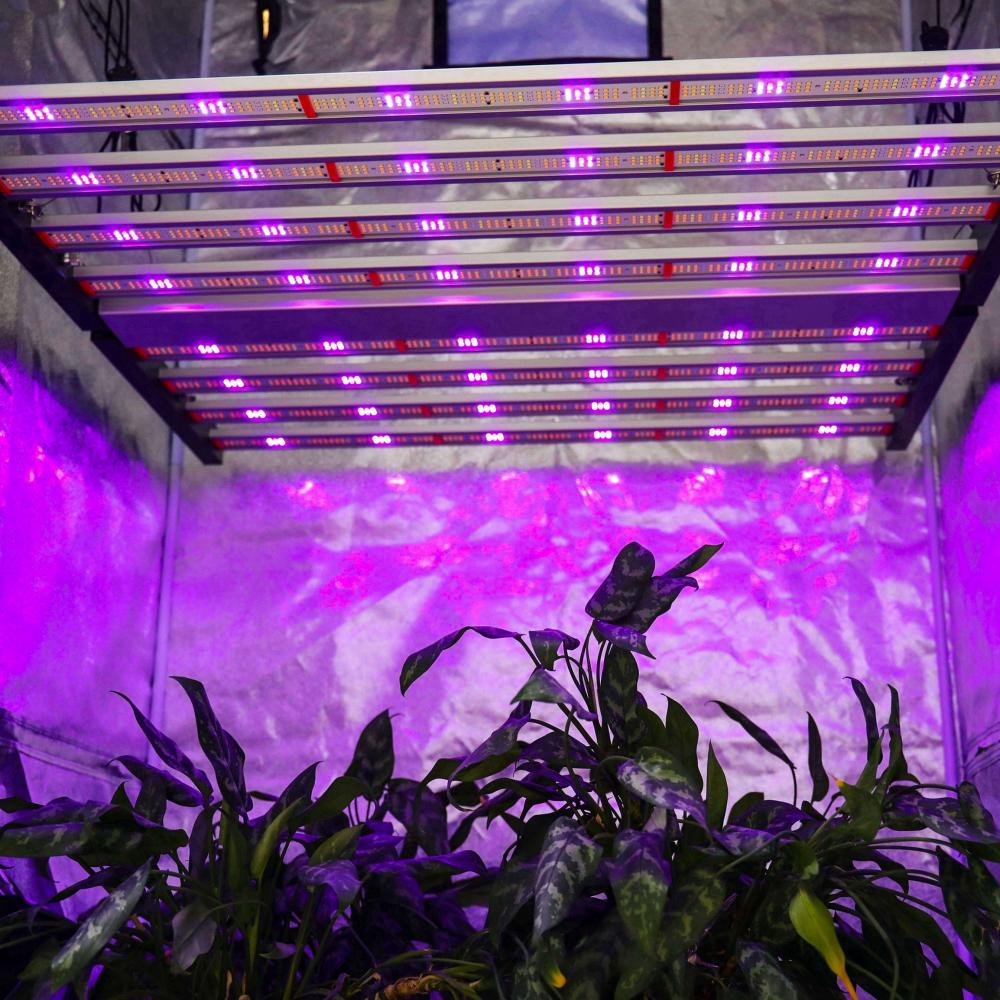
Privacy statement: Your privacy is very important to Us. Our company promises not to disclose your personal information to any external company with out your explicit permission.
Grow lights are great tools for making the growing process more efficient, but they can also be harmful to plants if not used properly. Here are 10 things to avoid when using LED and other types of grow lights.

For someone who regularly uses hemp-derived products, it can be very tempting to try growing this plant at home. The benefits are pretty obvious: the cost is greatly reduced, and there isn't any of the hassle associated with actually buying medical marijuana.
Many people around the world grow cannabis at home, whether for recreational or medicinal purposes, and while some of them do it well and manage to produce a great product, it doesn't work out so well for others- Their plants quickly wilt or produce negligible yields.
These problems may be related to improper use of lighting. (The same problem affects other types of plants.) Grow lights are great tools for making the growing process more efficient, but they can also be harmful to plants if used incorrectly.

Overheating of plants
You'll know the plant is absorbing too much heat if the leaves closest to the light start to turn brown. The first sign looks like a thin outline on the outside of a leaf, so if you grab it quickly, you'll have a chance of avoiding further damage. If some leaves start to curl, it could also be a sign that the plant is too close to the light. Good ventilation usually helps with this too.
Provide insufficient lighting
It is important to consider the size of your operation. Think about how many plants you have grown and how many LED lights you need to light them properly. You should also pay attention to the brightness of the lights you use. For example, a 200W LED light is said to be sufficient for a yield of about 100 grams. Make sure you have enough lights, but still find a good balance between providing enough light and not over-lighting.
Set lights at inappropriate distances
Overheating or insufficient lighting can be caused by having too many or not enough lights, but it can also be caused by placing lights too close or too far from plants. There are no general rules for setting the distance, but it is recommended to place the LEDs 12 to 18 inches from the plant.
Use inferior products
Light is one of the most important factors to consider when growing plants because it triggers the process of photosynthesis. If you use regular incandescent lamps, you are unlikely to grow strong and healthy plants. Therefore, for best results, it is recommended that you use a Full Spectrum Led Grow Light. They are designed for this purpose and have the ability to deliver light in the precise spectrum that plants need.
Choosing the wrong spectrum
To grow efficiently, plants need different types of light at each growth stage. With full-spectrum LED lights, this is easy to achieve, but if you choose the wrong setting, the plants will not develop well. You should also consider the conditions of the room in which the planting will take place. For example, plants benefit most from light in the blue spectrum when they are in the vegetative growth stage. This means that if you set your lights to emit light in the red spectrum, you will only hinder plant growth.
Using the wrong lighting schedule
You should be careful not to keep the lights on all the time, or worse, the opposite -- forgetting to turn them on. This may sound trivial, but it's easy to disrupt the light schedule, and even small changes can negatively affect plant growth. Cannabis needs about 18-24 hours of light during the vegetative stage and 12 hours during the flowering stage.
LED lights are not protected and maintained
Led Grow Lights are your friend and an important investment, so you need to take good care of them. They bring many benefits to the growing process, and a little maintenance and preparation can save you a lot of trouble. It is recommended that you set up a power stabilizer and connect it to the lamp to equalize the input voltage, thus protecting the chip inside the LED.
Overwatering when switching from HID to LED
Conventional HID lamps generate a lot of heat and produce a lot of infrared light. This can dry out the plant and soil, causing the plant to need to be watered more frequently. However, LED lights don't produce infrared light and don't emit nearly as much heat, so they don't require extensive watering.
without regard to other factors
LED Grow Lights are a great help when growing plants indoors, but they don't do much on their own. To produce large and healthy yields, many factors need to be considered - room temperature, airflow circulation, soil, nutrients, plant genetics and many others. Don't just focus on a single part of the growth process. Instead, try to get a holistic view of the entire chain and how everything is related to each other.
A Grow Light is an essential piece of equipment that every aspiring grower should have. Although they are easy to use and set up, you should pay attention to this list of common mistakes to avoid headaches.

Privacy statement: Your privacy is very important to Us. Our company promises not to disclose your personal information to any external company with out your explicit permission.

Fill in more information so that we can get in touch with you faster
Privacy statement: Your privacy is very important to Us. Our company promises not to disclose your personal information to any external company with out your explicit permission.